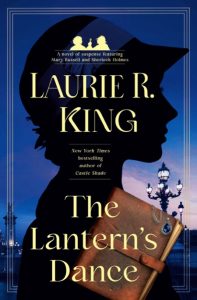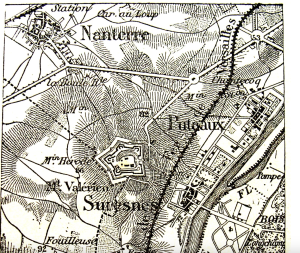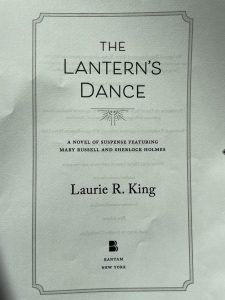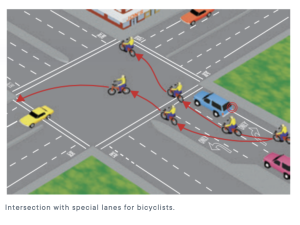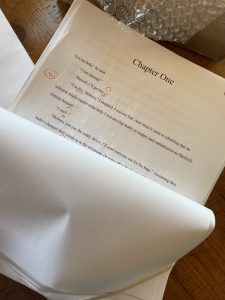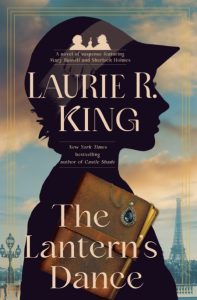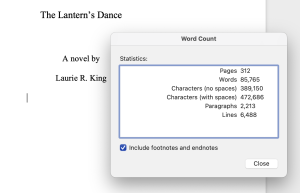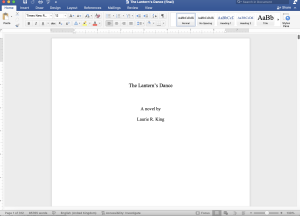Because what I do for a living often seems like magic—I come up with an idea and *SHAZAAM* the book’s in your hand—I’m writing a series of spoiler-free blog posts about the actual process. (Though rest assured—it’s still pretty magical.) ** “So, how many drafts do you write?” the question goes. Well, it depends on…
Read MoreThis is one in a series of blog posts (without spoilers!) about the writing process for The Lantern’s Dance. Sometimes, I go into a book knowing a fair amount about the setting and situation. Other times, I just know enough to know it’s interesting—but there will be work involved to flesh it out. The Lantern’s…
Read MoreIf you don’t get my newsletter, you may not be aware that Team LRK is putting on four all-day celebrations of Thirty Years of The Beekeeper’s Apprentice during 2024. Each will have talks, demonstrations, fun & games, and exclusive giveaways. And maybe even a touch of education. February 17 in Santa Cruz, CA, will include a…
Read MoreBecause to the reader, a book goes from vague idea to hardback-in-hand, I’m doing a series of blog posts (no spoilers!) about the actual process for The Lantern’s Dance. (Though rest assured—it’s still pretty magical.) I’ve just finished the proof pages—those pages where the much-marked-up manuscript is formatted to look like the actual final hardback.…
Read MoreWhen a person turns 70 in California, they need to show up at the DMV the next time their license comes up for renewal. They also need to take the handbook test. One of those is easier than the other. Not that you’d guess that from the DMV site: I call bullshit on that. Apparently,…
Read MoreThis is one of a series of blog posts (no spoilers!) about the actual process of writing a book from the idea to the hardback in hand. In this case, the group effort behind the magic. I’ve talked about how The Lantern’s Dance began, and about the ongoing process of working with my editor,…
Read MoreMy newsletter, The Buzz, just went out–and there’s a survey in it asking if you’d like to come to one of the FOUR Russell & Holmes events being held next year. We’re in the process of negotiating with the hotels, so we need to have a rough idea of numbers. In case you didn’t get…
Read More(Because what I do for a living often seems like magic—I come up with an idea and *POOF* the book’s in your hand—I thought I might do a series of blog posts (no spoilers!) about the actual process. (Though rest assured—it’s still pretty magical.) In the publishing world, cover art comes before the book is…
Read MoreBecause what I do for a living often seems like magic—I come up with an idea and *POOF* you have the book in your hand—I thought I might do a series of spoiler-free blog posts about the actual process. (Though rest assured—it’s still pretty magical.) April 1: first draft sent. (I talk about the earlier…
Read MoreBecause what I do for a living often seems like magic—I come up with an idea and *POOF* you have the book in your hand—I thought I might do a series of blog posts about the actual process. (Though rest assured—it’s still pretty magical.) How do we writers name our babies? The ones on the…
Read More